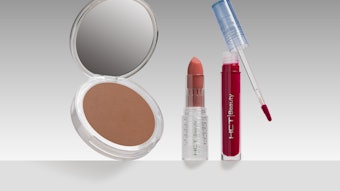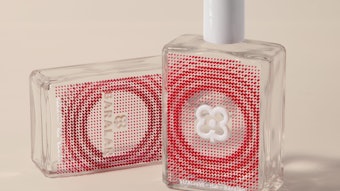A couple intriguing trends are unfolding: not only are consumers returning to brand loyalty, but they are continuing to and, in many cases, increasing their demand for sustainable products. A recently released 2009 study by Retailing Today magazine found that 80% of consumers have a brand preference when choosing their beauty products and an even larger 89% prefer a certain brand when selecting health and beauty aids.
In addition, consumers awareness and predilection for the green trend is only increasing. According to the 2010 ImagePower Green Brands Survey by communications firm WPP, 30% of consumers plan to spend more money on green products in 2011, and an astonishing 75% say it is important to them that the brands they buy are manufactured by green companies.
While these two developments at first glance seem unrelated, this represents a tremendous opportunity for brand owners. For those whose role it is to support sales and point their company and brand in a growth direction, what better way to do so than by capitalizing on what consumers already want: green products from good corporate citizens. The best vehicle to deliver that message? Review packaging. But remember to consider both appearance and function. After all, change costs money, and if you can reduce overall costs, it’s more likely your initiative will get the go ahead.
Appearance: Sometimes it’s About What’s on the Surface
Increasingly, design and package copy is dictated by both brand owners and retailers looking to increase store sales. In June 2010, Whole Foods Market announced that all personal care products and cosmetics claiming to be organic must have a third-party certification attesting to the legitimacy of the claim. And Walmart has continued to strengthen its Sustainable Packaging Scorecard initiative, most recently spreading it internationally to Canada and several other countries.
So first things first: If making an “all natural” claim, be able to back the claim. It seems obvious, but there are plenty of brands out there that could not if required to do so. Brand owners that can back the claim build credibility with retailers—who, in turn, ensure prominent product placement.
Also: Keep it simple. The simpler the packaging and the design, the cleaner the look. The cleaner the look, the easier it is for consumers to determine what they are buying. How many times have you been turned off by packaging that’s too involved? Consumers equate simplicity with high quality and are more apt to see the claims as credible. Let the product speak for itself. Keep it simple.
Delve Deeper: What’s Under the Surface
Once a packaging design has been chosen, don’t forget what arguably is the most important aspect: its functionality. A pretty outer pack means little if it can’t survive its shipping route. The truly green product will cost less to produce as a result of waste reduction, so review ways to reduce or alter your packaging.
Packaging, both inner and outer, must be durable, flexible and light. Ask your quality assurance department to list the most common problems associated with your product: Does it tend to lose its scent because the current packaging is too porous? Maybe it takes on the scents of other products stored near it. Maybe damages are down, but less and less items are fitting on a pallet, and that’s increasing transportation costs.
Take a look at newer, alternative packaging. Is it possible that your bath salts could be packaged in the zip box, a combination carton and zippered pouch design instead of the plastic screw-top canister? That could increase pack-out. Consider eco-friendly and naturally lighter tubes offered by suppliers such as Alcan Packaging. Talk to the experts. Both your operations team and a third-party logistics provider specializing in your product will have suggestions. And of course, any sustainable changes you make ensure a higher rating on retailers’ sustainability scorecards.
Logistics: Review the Total Package
So you’ve got a more natural look and a sustainable structure. Now what? Consider the entire product life cycle, and that means finding a transportation and warehousing provider that can safely ship and store your product. According to the “2010 Logistics Benchmark Report” by the Grocery Manufacturers Association, brands are feeling the squeeze, having to increase performance to record levels as a result of the tight economy and retailer demand. Freight costs increased 11% between 2008 and 2010.
Retailers want shorter lead times and decreased in-stocks. Brands want greater visibility and reduced costs. Finding a provider that works with both supply chain partners is a clear benefit.
Many brand owners are now outsourcing their logistics solutions to take advantage of volume pricing and supply chain expertise. A number of providers—including CaseStack, Hanson Logistics and Millard—have implemented innovative solutions such as retailer consolidation programs to cut costs and increase efficiency, the two most important issues in today’s market.
In this type of program, your product is combined with other products all ordered by a retailer in a master purchase order. Your products are stored in the same warehouse as the others, so your would-be less-than-truckload (LTL) order is shipped on a full truck, providing you truckload pricing instead of steep LTL rates. On-time performance increases 20%, lead times shorten and damages decrease. Transportation costs go down 20–60%.The resulting savings can be applied to shelf price, demonstrating to the consumer that the brand is dedicated in reducing excess and passing the savings on to them.
Dan Sanker, CEO of CaseStack, explains, “Changes in the status quo breed change, and when you join a consolidation program, [the logistics supplier] works with the retailer on your behalf.” On-time performance improves, costs are reduced and millions of pounds of carbon emissions are taken out of the equation.
Consumers want brand owners to do more with less and show they have a personal stake in their product’s life cycle. Nowhere is that more effectively communicated than in your packaging. Approach it from both an aesthetic and functional perspective, consider how that product gets on the shelf and your newest marketing initiative has the potential to both increase sales and drop operational costs.
Elizabeth Boch is the marketing manager at CaseStack—where she handles the public relations, advertising, marketing and business intelligence strategies for the growing provider of sustainable logistics solutions. A substantial background in journalism and advertising brought her to CaseStack, where she has worked since 2008.








